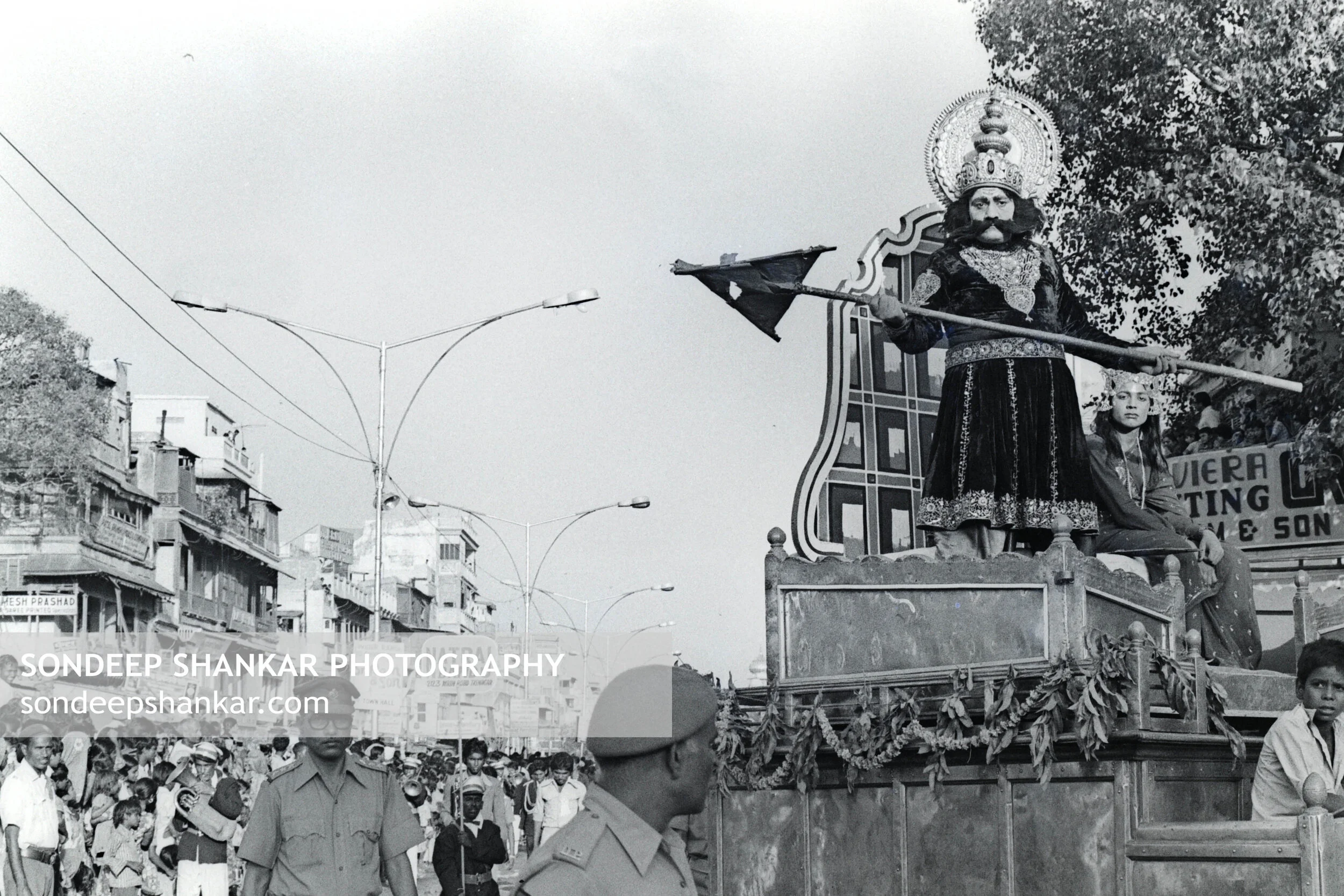
Ramlila Procession Through Old Delhi
The last Mughal emperor Bahadur Shah Zafar’s set the tradition of the Savari (procession) of Ramlila in Old Delhi. The celebration brought the neighbouring Hindu communities together and became one of the most important cultural events of the walled city. The procession began in the afternoon and travelled from one temple to another till it reached its final destination—the Ramlila performance ground—by evening. Late in the night, after the performance had ended, the Savari would return to the temple it had started from.
The procession would be at least a kilometre long and pass through many significant galis (lanes) and mohalla’s of the walled city. It was led by horses, followed by camels and elephants. Next to follow were traditionally crafted carts with water dispensers that moved along the Savari, supplying water to the crowds waiting eagerly to get a glimpse of their favourite tableaus or jhankis, as they were called. Troupes of musicians playing instruments such as the nafir and shehnai would lead these tableaus.
Each tableau depicted a scene from the Ramayan. The last one, which carried Ram, Sita and Lakshman, was followed by hundreds of hawkers selling bows and arrows, masks, etc..
In its glory days, local businessmen sponsored this major event. The brand 502 Pataka Bidi, for instance, became almost synonymous with the Savari in the 1980s. With locals’ enthusiasm waning, most of the big sponsors withdrew their funding and now the existence of this age-old tradition is at stake

Ramlila Procession in Delhi
A tableaux depicting the demon king Ravana and his son Meghnad from the epic Ramcharit Manas passing through Nai Sarak, a wholesale market for books and stationary in Old Delhi. Photograph: Sondeep Shankar

Ramlila Procession in Delhi
A tableaux depicting the demon king Ravana showing his might and carrying a spear from the epic Ramcharit Manas passing through the historic Chandani Chowk in Old Delhi. Photograph: Sondeep Shankar

Ramlila Procession in Delhi
In its glory days, local businessmen sponsored the major events in the Ramlila procession. An elephant being used to advertise in the Savari in September 1979. Photograph: Sondeep Shankar

Ramlila Procession in Delhi
Children and crowds wait patiently for the Ramlila procession which was often delayed by hours due to ceremonies performed on the way by select devotees in Old Delhi. Photograph: Sondeep Shankar

Ramlila Procession in Delhi
A pair of bullocks pull a tableaux depicting the hindu mythological god Ram and his brother Laxaman in a forest passing through the historic Chandani Chowk in Delhi. Photograph: Sondeep Shankar

Ramlila Procession in Delhi
Ramlila procession passing through Old Delhi, September 1979. Viewers are seen in the balconies and rooftops of houses on both sides of the street. Photograph: Sondeep Shankar

Ramlila Procession in Delhi
Mythological characters Narada Muni and Kakbhushundi brings light hearted moments for the audience during Ramlila procession passing through Old Delhi, September 1979. Kakbhushundi is a sage in Hindu Scriptures and per the ancient texts, it is said that Kak Bhusundi was the great devotee of Lord Rama and was the first person to narrate the Ramayana, much before Valmiki and Tulsidas. Narada Muni, is a god-sage, famous in Hindu traditions as a travelling musician and storyteller, who carries news and enlightening wisdom. Photograph: Sondeep Shankar